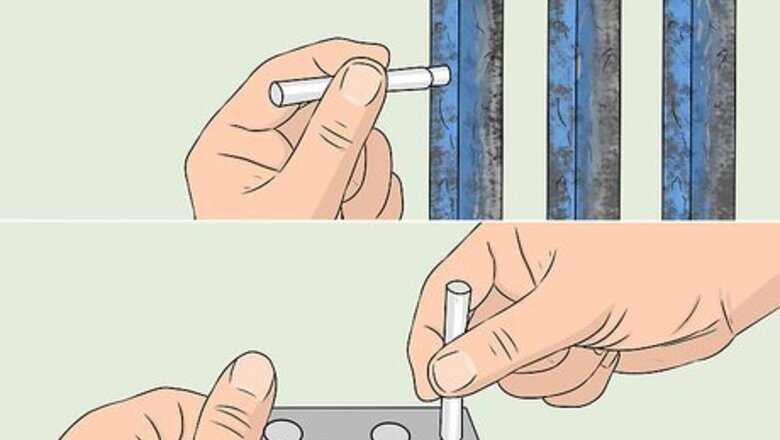
views
Scraping Off the Paint
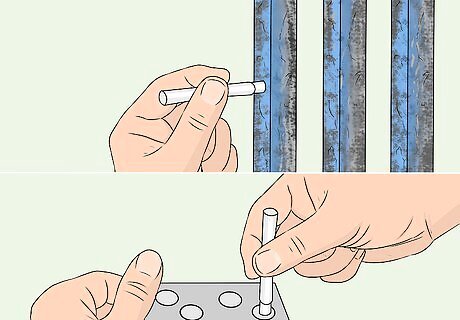
Test a patch of the iron railing for lead. Purchase a lead test kit or swab from a hardware store or online. Carefully scrape the iron railing with a utility knife or box cutter and follow the test kit or swab instructions for testing the paint. You should see instant results that tell you if it's safe to scrape off more of the paint. This is especially important to do if the railing was painted before 1978. If your iron railing tests positive for lead, contact a professional painting company to remove the paint for you.
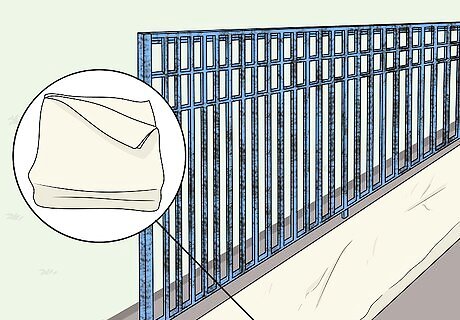
Lay down a drop cloth to make clean up easier. Whether you're removing paint from an indoor or outdoor railing, putting down a drop cloth minimizes the mess. Consider using old sheets if you're working on a small iron railing. If you don't have drop cloths or old sheets, spread newspaper underneath the railing.
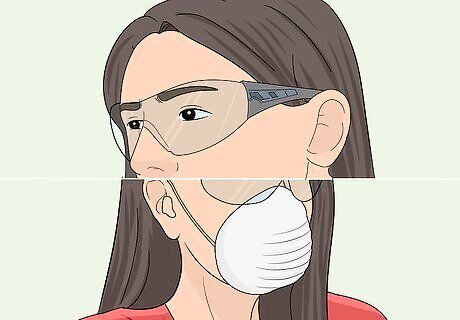
Put on eye protection and a mask before scraping off the paint. Wear a dust mask to protect your nose and mouth from fine paint particles. You can also put on a pair of safety goggles to protect your eyes. You may want to put on gloves to protect your hands when you work with the mineral spirits. If you're working on an indoor railing, open windows to ventilate the space.
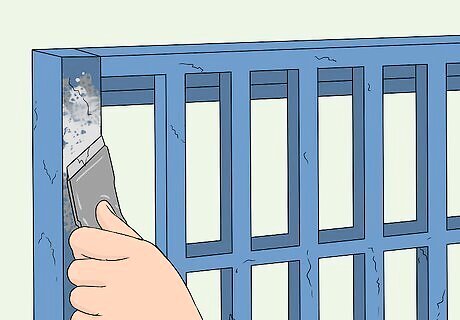
Use a flat metal blade to scrape off large flakes of old paint. Get out a sturdy scraper with a straight blade and run it along the smooth sides of the iron railing. Keep scraping the blade against the metal so large flakes of dry paint fall off onto the drop cloth.Tip: To quickly remove paint, put a wire brush attachment on an electric drill. Turn on the drill and work the wire over the surface of the railing. You can try to scrape paint off of curved portions of the railing, but this might be difficult unless you have a very narrow blade.
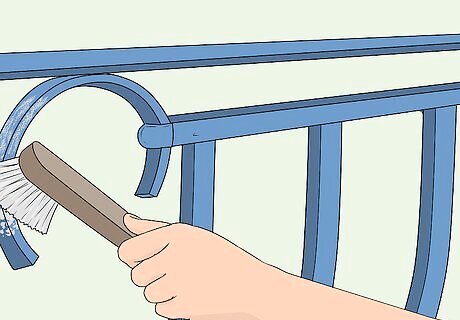
Rub a wire brush over the curved portions of the railing. To remove paint from iron scrollwork, take a narrow wire brush and scrape it back and forth over the metal. Continue to scrape so the paint falls away. Choose a firm wire brush that won't snap as you apply pressure to the brush head.
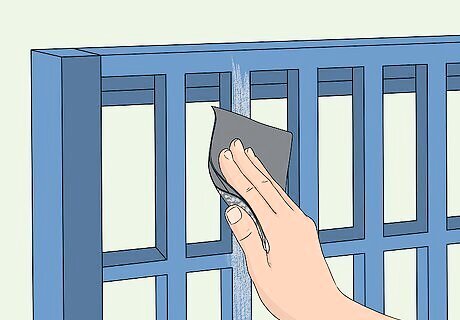
Sand the entire surface of the railing to remove lingering paint. Take a piece or block of 80-grit sandpaper and rub it back and forth over the railing. The sandpaper is rough enough to remove any paint that the scraper and wire brush couldn't get off. If the scraper and wire brush removed all of the paint, you can skip this step.
Using Chemical Stripper on Stubborn Paint

Dip a brush or roller into chemical paint stripper. Take a paintbrush, foam brush, or foam paint roller and dip it into liquid chemical stripper. Remember to work in a well-ventilated space.Tip: Wear gloves when handling chemical paint strippers because they can irritate your skin. Remove oil-based paint with paint thinner and water-based paint with a latex removal agent. You can dip the brush directly into the stripper or pour the liquid stripper into a paint tray.

Apply the chemical stripper to the railing. Spread the liquid stripper to any stubborn paint spots on the iron. You can also brush it over hard-to-reach places on the iron railing. Spread a thick layer of the chemical stripper so it works quickly.
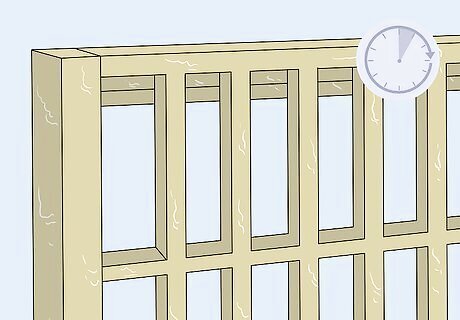
Let the chemical stripper sit on the railing for at least 5 minutes. Follow the manufacturer's instructions about how long to let the chemical stripper sit on the metal. In general, leave the stripper on the railing for at least 5 minutes. This gives the chemicals time to break down the old paint that's on the railing.

Scrape the paint off of the railing. Take a flat metal scraper and rub it back and forth over the old paint. Keep scraping so the paint flakes and falls off. If there are still stubborn spots, you can apply more chemical stripper and wait before scraping it off again.
Protecting and Repainting the Railings
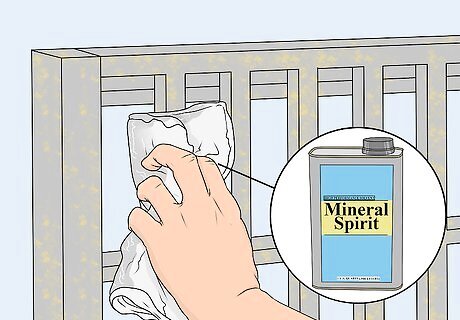
Wipe off the railing with a tack cloth or mineral spirits. Use a shop vac or vacuum extractor to vacuum up the dust you created from sanding the surface. To remove fine paint particles, take a tack cloth and rub it over the entire surface of the iron railing. The tack cloth contains a slightly sticky substance that picks up fine particles of paint or metal so the bare iron is ready to paint. If you prefer, dip a cloth in mineral spirits and wipe it over the railing to clean it before painting. You can buy tack cloths from hardware stores or online. Or, use a clean, damp microfiber cloth. Mineral spirits air dry quickly so there's no need to dry the railing with a cloth.
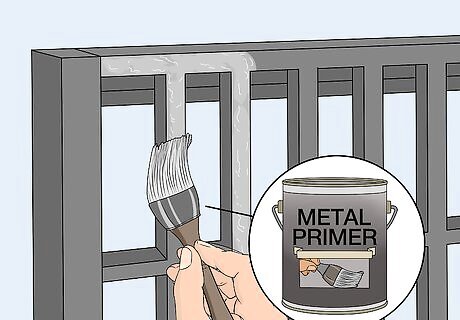
Brush a metal primer over the railing. Purchase a primer designed for rusty metal and stir it well with a long paint stick. Then, dip a flat brush into the primer and spread it on the entire surface of the iron railing. The primer protects the iron from moisture damage and helps the new coat of paint stick.Tip: It's important to prime the railing as soon as you've removed the paint since the primer prevents the iron from rusting further. If you prefer, use a small foam roller to apply the primer.
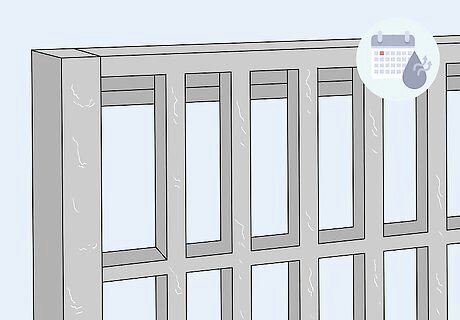
Let the primer dry for 24 hours. Read the manufacturer's instructions and wait the recommended amount of time so the primer dries. The primer should be dry to the touch within 4 hours, but you should wait 24 hours before applying the paint. Although you may want to apply more than 1 coat of paint, you only need 1 coat of primer. The primer may take longer to dry if the weather is cooler than 70 °F (21 °C) or it's very humid.
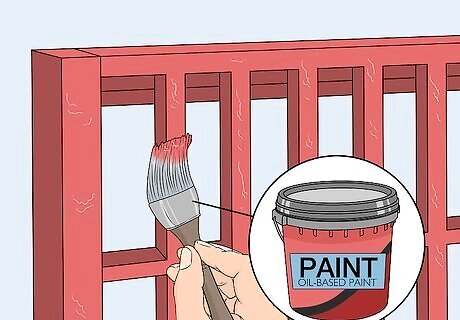
Apply new oil-based paint to the iron railings. Choose an oil-based paint designed to use on metal. This type of paint prevents moisture from getting into the metal, which causes it to rust. Dip a foam roller into the paint and spread it onto your iron railings. Then, let the railings dry completely. Use a paintbrush to paint any areas that you can't cover with the roller. If you want to apply another coat, wait 4 hours before spreading another coat of paint.




















Comments
0 comment